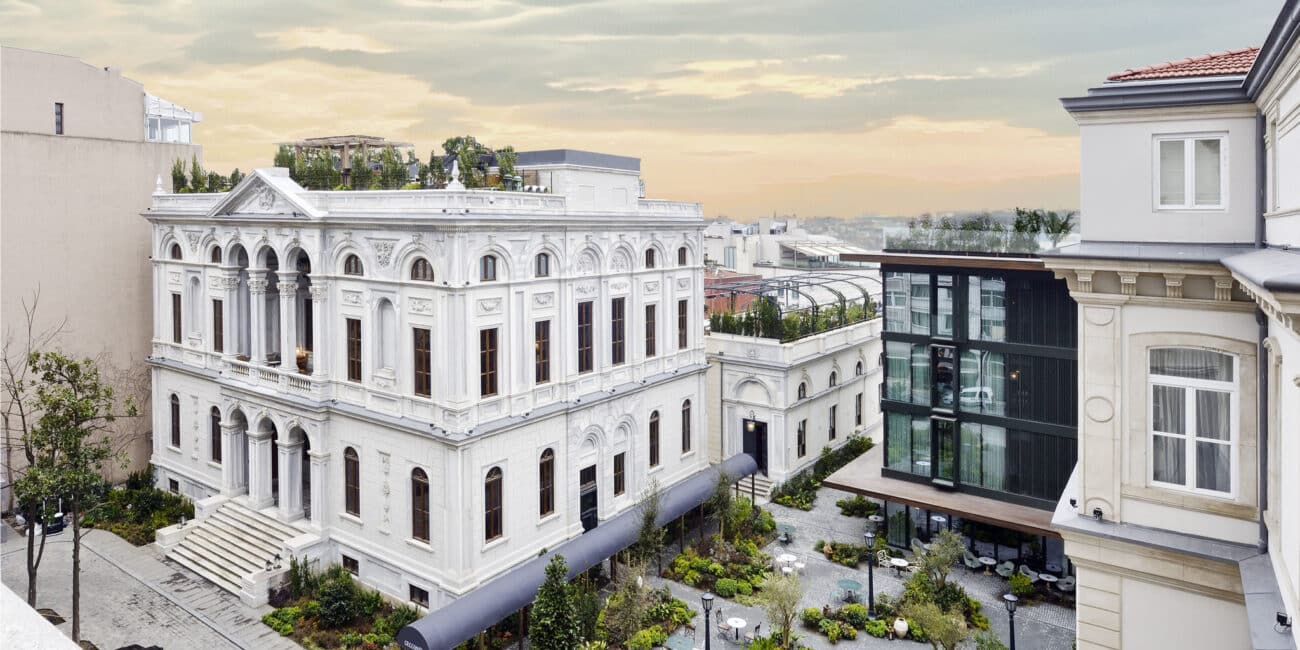Palazzo Corpi - The Hollings Center (original) (raw)
The Palazzo Corpi is one of the oldest U.S. government-owned diplomatic premises in the world. Long a site of intercultural exchange and dialogue, it remains so even today.
The Palazzo
Constructed between 1873 to 1882, the Palazzo meant to serve as the residence of Ignacio Corpi, a wealthy Genoese shipowner who operated his business in the Pera (now Beyoğlu). Corpi comissioned Giacomo Leoni and Georgio Stampa to construct the residence. The palazzo was designed in a neoclassical style. The interior features intricate marble detailing, as well as numerous frescos featuring mythological scenes.
Unfortunately, Ignacio Corpi passed away prior to the completion of the palazzo. This led the family to lease the property to the United States legation to the Ottoman Empire in 1882.
A Diplomaic Presence
In 1907, Ambassador John G. A. Leishman used his personal funds to purchase the property for 28,000 Ottoman liras, having decided that the US should own rather than lease the building. Leishman anticipated reimbursement from the U.S. government upon a return trip to Washington and was surprised to find that Congress had no plans for this repayment.
Rather than accepting the personal expenditure, Leishman hosted several members of Congress to a party, inviting them to late night party. Ambassador Leishman challenged the Congressional members to a poker game over the status of the Palazzo. He won, resulting in Congress reimbursing Leishman for the Palazzo. The act made the building the first diplomatic building purchased by the U.S. government.
The Palazzo served as the U.S. embassy and residence from 1906 and then as the consulate general from 1937 until 2003, after the designation of Ankara as Turkey’s capital in 1923. Throughout this history, the Palazzo Corpi served as a symbol of U.S. public diplomacy in the region.
Pictured: Palazzo Corpi in 1920, serving as the U.S. Embassy.
A Future Site for Dialogue
In 2003, the U.S. State Department moved the Consul General to a more modern facility on the European shore of the Bosphorous. Many of the diplomats and officials who had worked at the Palazzo Corpi were determined to preserve the building’s history and significance to American foreign policy. Congress created the Hollings Center in 2004 to fill this role. It designated the Center to host programs that reinforce communication and understanding between the US and the Muslim world.
To best preserve the history and structure of the Palazzo Corpi, the U.S. State Department negotiated on the Hollings Center’s behalf for a Turkish holding company to spearhead needed renovations and restoration. This process was completed in early 2015, when the Palazzo Corpi reopened as the Soho House Istanbul. Featured in this new space is the Hollings Center’s Istanbul presence, allowing for the continuation of the Palazzo Corpi’s historic tradition of promoting dialogue and fostering cross-cultural cooperation.

*Photo courtesy of Soho House Istanbul.